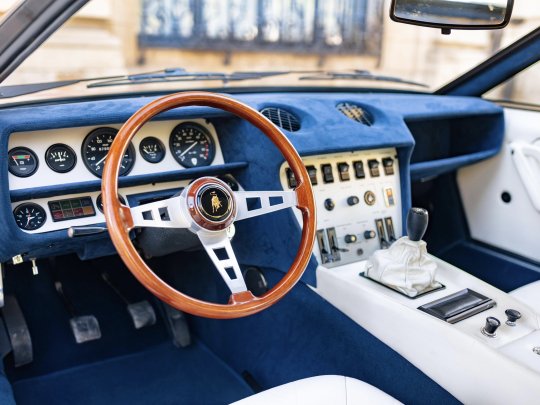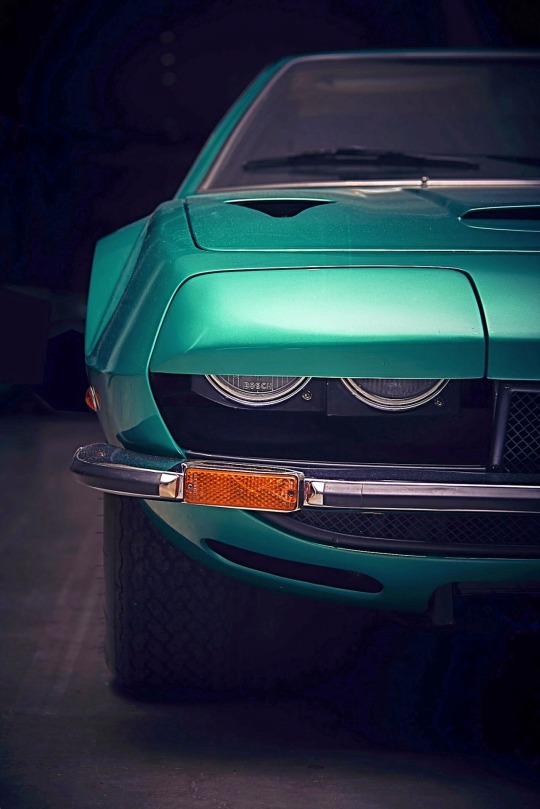#Jarama S
Photo
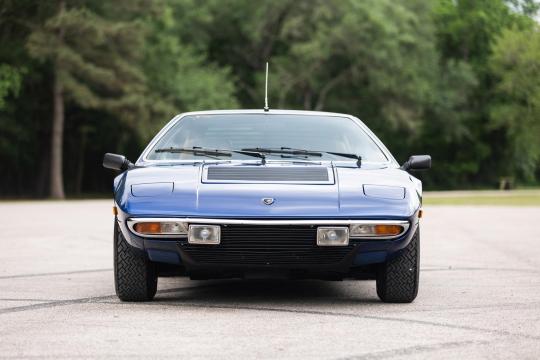



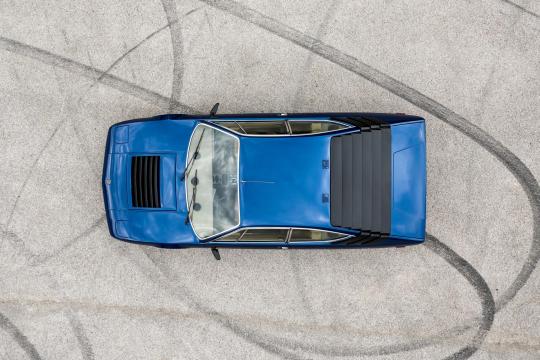

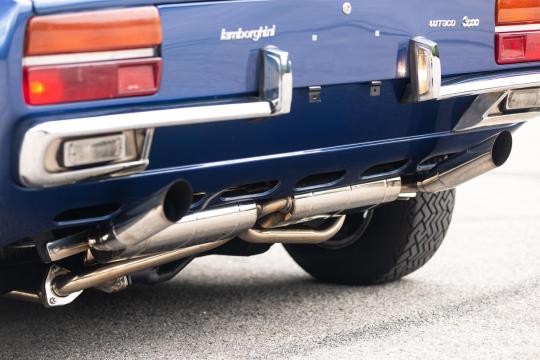
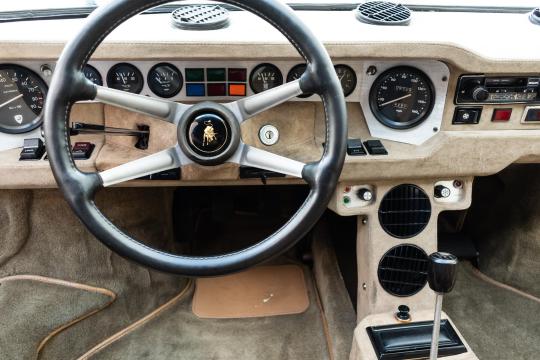
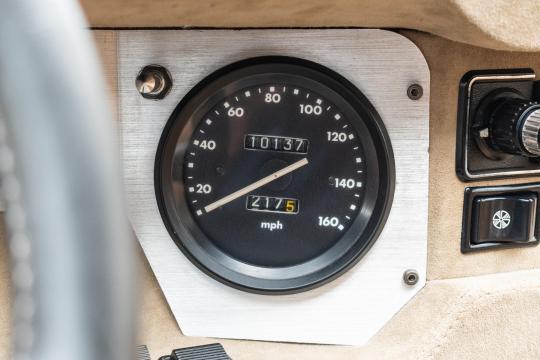
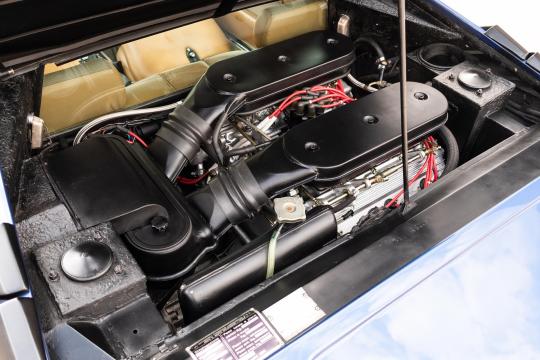
Lamborghini Urraco P300
Despite having been conceptualised as the model to dramatically increase sales and bring Lamborghini greater financial stability, the Urraco P250 proved a commercial flop. Production started in late 1972 following major equipment and floorspace investment. However, by late 1974, less than 500 had been delivered. The Urraco should have gone into production two years earlier than it eventually did. Lamborghini had originally conceived the model with a view to selling over 1000 examples every year.
The disappointing reality left Lamborghini deep in the red, but the Urraco was only partly responsible for a difficult few years.
Compounding the firm’s troubles had been delays for the Countach, a worldwide recession, problems at Lamborghini Trattori and unionised labour, all of which contrived to take their toll on the company founder. In 1972, Ferruccio Lamborghini had sold his tractor company along with 51% of his motor car business. He cashed out of the final 49% in 1974 when the world was in the midst of an energy crisis that slashed demand for gas guzzling machinery.
Throughout this tumultuous period, development work continued on the Urraco. It mainly focused on the Paolo Stanzani-designed V8 engine that had been created especially for the new model at considerable expense. In November 1974, an uprated Urraco P300 was launched at the Turin Motor Show. It immediately went into production alongside the Countach LP400, Espada Series 3 and Jarama S.
Most significantly, the Urraco P300 came with an enlarged three-litre engine. Equally importantly, the power unit now incorporated dual instead of single overhead camshafts.
To take capacity up to three-litres, Paolo Stanzani’s all-alloy 90° V8 was stroked from 53mm to 64.5mm. Bore went unchanged at 86mm for an overall displacement of 2997cc (an increase of 534cc). Compression was dropped from 10.5:1 to 10.0:1. Four new Weber 40 DCNF twin-choke downdraught carburettors were installed to replace the old 40 IDF 1s used previously.
The consequence of these improvements was a dramatic jump in output. Peak power was up 40bhp to 260bhp at an otherwise unchanged 7500rpm. The torque rating also rose considerably; 195lb-ft was now on tap at 3500rpm compared to 166lb-ft at 5750rpm for the P250.
As before, ignition was via two Marelli coils and a single Marelli distributor.
Lamborghini’s five-speed manual gearbox was beefed up to cope with the increased power and torque. Transmission was via a single dry-plate clutch and Lamborghini differential. New damper settings improved the ride, but otherwise little was changed to the existing platform The P300 was based on the same steel monocoque body shell as its predecessor. The engine was housed transversely like the Miura.
Suspension was independent all-round with MacPherson struts, coil springs and telescopic shocks. Anti-roll bars were fitted at either end The twin circuit brake system incorporated unchanged 278mm ventilated Girling discs. Campagnolo’s handsome five-bolt cast magnesium wheels were retained. They measured 7.5 x 14-inches and originally came shod with Michelin XWX tyres.
An 80-litre fuel tank was fitted in the engine bay.
Visually, the only change made to the P300 Urraco was a switch from a two-bank to six-bank radiator cooling vent on the front lid. The rest of Marcello Gandini’s soft wedge creation was unaltered.In a decade not exactly renowned for design longevity, the Urraco proved somewhat timeless. Compared to Bertone’s other mid-engined 2+2, the Ferrari Dino 308 GT4, the baby Lamborghini aged very well, even though it was ultimately outsold by the Maranello product by five to one.Build quality was considerably improved over earlier examples and nowhere was this more apparent than in the cockpit.Bertone had originally been responsible for furnishing the bodyshells, but by the time the P300 was on stream, this work had been taken in-house.
Lamborghini used better quality materials and ensured a higher standard of fit and finish.To this end, P300s were generally equipped with full leather interiors instead of the often garish two-tone leather and fabric combinations seen earlier.
The full width dash layout was still just as haphazard though. The rev counter and speedometer were located at either end of the instrument binnacle and angled in towards the driver. Supplementary gauges and various rocker switches were housed in between.
Lamborghini’s unusual deep dish steering wheel with its four arced horizontal spokes and leather rim was also retained. Like the P250 (which remained in production for a few months longer to use up an overstock of parts), the only update was the gradual shift to anodised black bumpers, wipers and window frames. A more conventional three-spoke steering wheel was also introduced towards the end of production.
#Lamborghini Urraco P300#Ferruccio Lamborghini#Countach LP400#Espada#Jarama S#Miura#Ferrari Dino 308 GT4#Bertone
176 notes
·
View notes
Text

70's Lamborghini Jarama S
38 notes
·
View notes
Text
Tifosi in 1981: "ferrari 126 CK is a shit car, there's no way ferrari can win a race with that car"
Gilles Villeneuve: "hold my maple syrup"
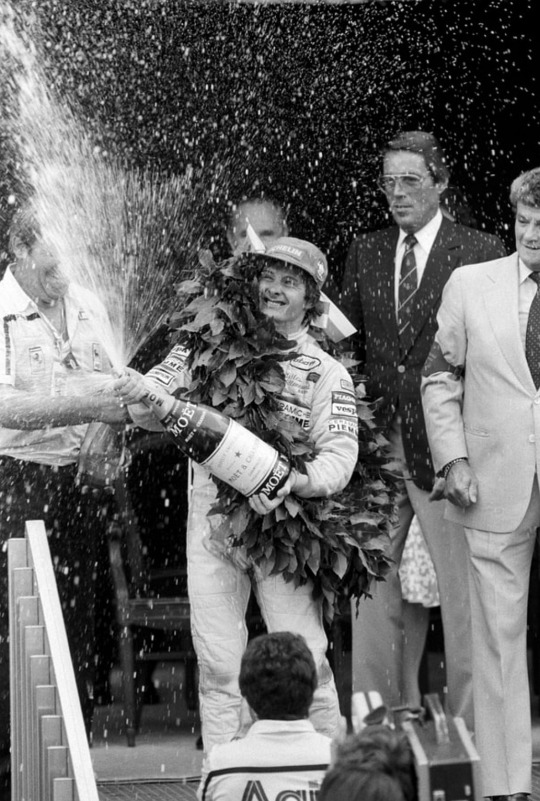

#the fact that he won in the slow track makes it a little bit funny#he even created a car train in jarama 😭#gilles villeneuve#classic f1#anw pics from l0ura9's blog!
45 notes
·
View notes
Link
0 notes
Text
Lamborghini Jalpa and Lamorghini Countach 5000S To me, the Jalpa is THE forgotten production Lamborghini. It makes the Jarama seem like the talk of the town. That being said, itââ¬â¢s actually the best...

1 note
·
View note
Text
MotoGP 2023: Marc Marquez Geber RC213V Berbahan Bakar Nabati Di Spanyol
MotoGP 2023: Marc Marquez Geber RC213V Berbahan Bakar Nabati Di Spanyol
POROSKOTA.COM – Marc Marquez melakukan uji bahan bakar nabati saat menggeber kuda besinya, RC213V-S di Sirkuit Jarama, Madrid, Spanyol.
Bahan bakar non-fosil terus dikaji penggunaanya seiring MotoGP 2022 rampung, dan fokus ke MotoGP 2023.
Pembalap Repsol Honda, diberikan kepercayaan untuk melakukan uji tes bahan bakar nabati tersebut, Selasa (8/11/2022).
Tes dilakukan dengan RC213V-S dan dipantau…
View On WordPress
0 notes
Text
Overview of Lamborghini's past
If you've been keeping up with Lamborghini's history, you already know how it started. The Diablo, the P250 Urraco, the Countach, and the first Lamborghini will all be covered in this article. Nuccio Bertone approached Lamborghini with the notion of designing a shoe that matched his foot, and that was where everything began. Marcello Gandini, a young designer, joined Bertone at the same time as Giorgetto Giugiaro left to found Ital Design.
The Italian company Lamborghini makes supercars. The Countach, Espada, and Jarama made comprised its initial model lineup. The Urraco S, a mid-range sports car with a V12 engine, was also produced in 1974. The LM002 is an off-road vehicle that the business also produces.
There are a few similarities between the Lamborghini Diablo and its biblical name. First, it has roots in Spanish bullfighting, which gave Ferruccio Lamborghini the idea for his renowned supercar. The name also pays homage to the brave bull that the Duke of Veragua reared. The first person to engage in a bullfight with the Diablo gave the bull its official moniker in Madrid, where it made its debut in Europe in 1869.
A mid-engined sports automobile called the Lamborghini P250 Urraco was modeled after the Porsche 911. The Urraco was first advertised as a two-seater with an inconvenient back seat. Then, it was built with a V8 engine and a mid-engined configuration. The early 1970s saw Ferruccio Lamborghini decide to launch an entry level model into his line, which is when this car's history began. To compete with the Porsche 911 and Dino 244, he sought to develop a V8-powered model because, at the time, his company only made vehicles with V12 engines.
One of the most recognizable supercars ever produced is the Lamborghini Countach, which has been in production for more than 40 years. The initial model was created by Marcello Gandini, who had also created the Lancia Stratos Zero concept car, and it was released in 1971. It helped set the bar for supercar design with features like its scissor doors and cab-forward design. The first generation of Countachs had a potent V12 engine and was built in 1990. Unfortunately, only 2,049 of these were made in all.
2007 saw the introduction of the Lamborghini Reventon. A 20-car production run was announced, with a price of $1,510,000 before taxes. The Reventon rode the hype train despite the worldwide economic crisis that dried up many millionaires' pockets. Stephan Winkelmann, for instance, secured a Reventon for himself.
The genesis of the Lamborghini 350 GTV began in the late 1990s when Romano Bernardoni purchased a dilapidated prototype from the Ferrari factory. It required immediate repair, and the new owner had to undergo a lengthy restoration process, including a V12 engine replacement. The body was then painted metallic green from the original green.
The Aventador coupe is a sports car using the Lamborghini SV as its foundation. The vehicle has a revised front end with two front wings and a front skirt that extends forward. Significant downforce is produced by this design, which enhances steering response, turn-in at high speeds, and handling and stability. The vehicle's massive front air intakes also contribute to better brake cooling.
In1987, the first Lamborghini 350 GT was built. Carlo Anderloni, also known for creating Alfa Romeo bodywork, created it. The 350 GT prototype was turned into a production model by the two businesses. Then it was sold to a car dealer in Italy.
0 notes
Video
vimeo
Lamborghini Jarama S from Patrice De Bruyne on Vimeo.
Lamborghini Jarama S - GatsbyOnline
0 notes
Photo
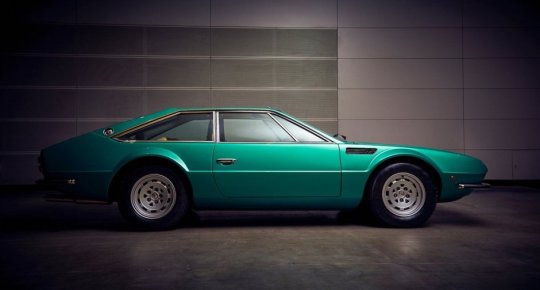
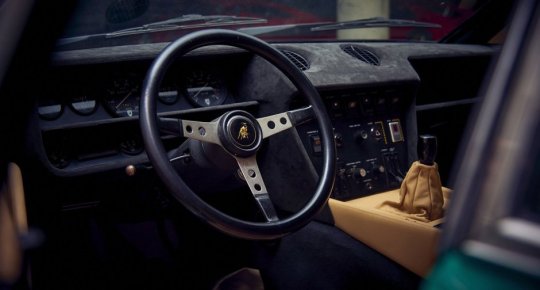

Lamborghini Jarama S
57 notes
·
View notes
Text


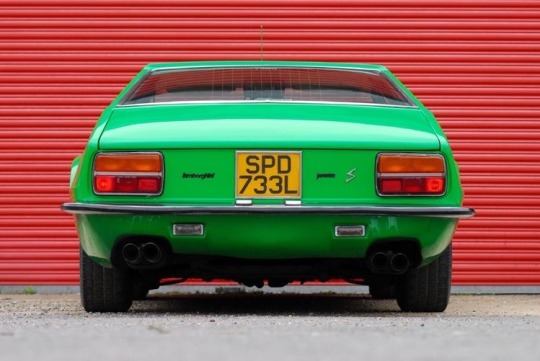
Lamborghini Jarama S - its a rare sight today…design Bertone.
219 notes
·
View notes
Photo
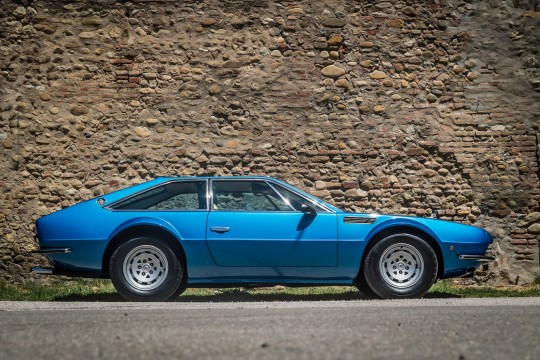
LAMBORGHINI JARAMA S. Dernière représentante de la lignée des 2+2 Lamborghini, la Jarama a fêté cette année ses 50 ans. Sa variante S, apparue en 1972, n'a été produite qu'à 150 exemplaires. Photo Lamborghini contemporaine. - source Marchet dedans J-FM Inside
65 notes
·
View notes
Photo
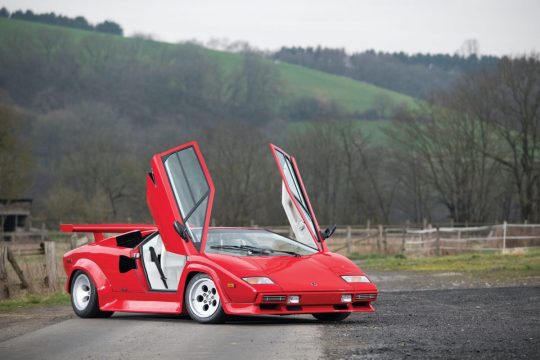
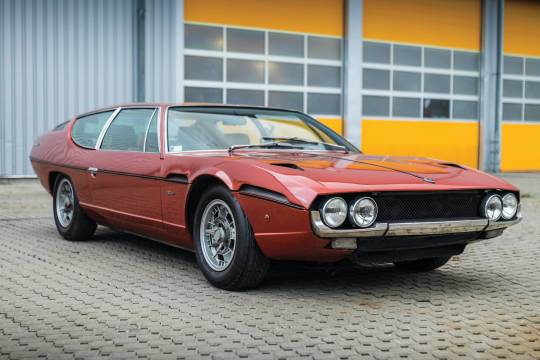



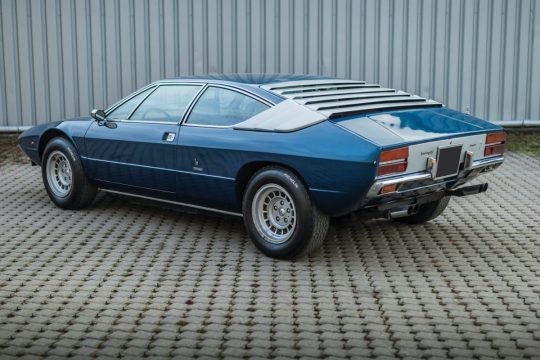
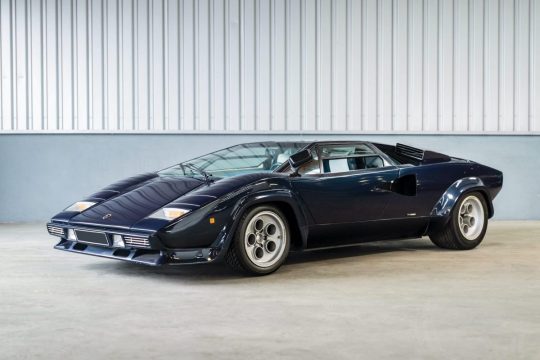

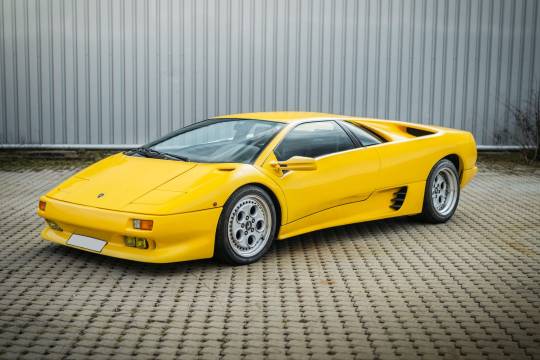
The Petitjean Collection !
The Petitjean Collection (almost 100 cars) is an incredible single-owner collection that took half a century to amass.
Marcel Petitjean, its current owner, is a French ex-race car driver that put his money toward a collection of rare and valuable cars starting in the late 1960s with the intention of starting a museum.
He seemed to have a particular affinity for Lamborghinis as there are nine in the collection:
1984 Lamborghini Countach LP500 S by Bertone,
1971 Lamborghini Espada,
1971 Lamborghini Jarama 400 GT,
1968 Lamborghini Miura,
1986 Lamborghini Jalpa,
1974 Lamborghini Urraco P250,
1979 Lamborghini Countach LP400 S by Bertone,
1970 Lamborghini Islero,
1991 Lamborghini Diablo,
RM Sotheby’s
#art#design#vintage cars#Cars#luxury cars#luxury lifestyle#sports cars#sportcars#lamborghini#Lamborghini Diablo#islero#urraco#jalpa#lamborghini miura#espada#countach#bertone#marcel petitjean#collectors#Collection#rm sotheby's#lamborghini espada#lamborghini urraco#lamborghini jalpa#unique#auction#carsauction#race car#history
59 notes
·
View notes
Text
Within two weeks of the total application of Libertarian Communism in Aragón, collectivized businesses became vacuums of empty stores and warehouses, creating a serious supply problem. The textile industry, the produce industry and in general, all light industry in Catalonia, also collectivized by the Anarchists, refused to accept the vouchers and other paper money given out by the “Committees” in Aragón. They demanded that they be paid in the coin of the Republic.
In reply the Committees of Aragón threatened the National Committee of the C.N.T. with cutting off the electric power that serviced the greater part of the industries of Catalonia, plus the central electrical system itself, if clothes and supplies were not sent to the “liberated areas.”
In reply to the gravity of this threat the National Committee of the C.N.T. ordered the Military Chief of the Anarchist forces in Aragón to execute the leaders of the Committees if they persisted in their attitude.
While the contradictions within the F.A.I./C.N.T. leadership grew ever sharper, the dominion which they continued to exercise over the peasantry of Aragón and Catalonia presented grave consequences for the war as a whole. Economically, these areas which had held such a wonderful potential for the Republic, were fast becoming wastelands. Politically, tens of thousands of peasants were losing all interest in the war; some had been actually forced into minor revolts against their persecutors.
In Catalonia the situation grew worse. At the end of August the Casanovas Government issued a decree that imposed the obligatory syndicalization of all peasants into one union---The Federación de Sindicatos Agricolas de Cataluña (F.E.S.A.C.).
[...] [T]he Catalan peasantry [...] were obligated to join the new syndicates where the selling of all crops would be regulated as well as all personal purchases. [The] syndicate would control the prices, security and credits. The system took from the peasants all the freedom to handle their own products, buying and selling, and in the long run, destroyed any stimulus to produce anything beyond their personal needs.
With an abysmal lack of knowledge of economic laws, the Anarchists also set out to reorganize Catalan industries, basing their concepts upon infantile solutions that had been declared “utopian” by all Marxists as early as the 19th century. Applied to the 20th century, only catastrophe could result.
[...]
A first result of the takeover was the refusal by the F.A.I. to recognize the priorities of the fronts---this, when the war against Fascism was a question of life and death for the whole of Spain. All stimulus was killed. “Equal” salaries were imposed for all categories; from engineers and technicians to the lowliest worker.
[...]
The Anarchists forgot, or never knew, the simple, elemental reality, that production is the decisive aspect of any active economy; if you do not produce there is nothing to distribute. They put down the problems of production, concentrating solely, in their demagoguery, upon their programs for “equal distribution.” In fact this highly touted “equality” didn’t apply either, since salaries differed from one factory to another. The workers collected according to the fortunes and the reserves of their particular factory, and were continually subjected to the caprices of the omnipotent Committees. When the reserves were spent the F.A.I. then went to the [central] State to ask that it subsidize the payrolls.
This process of applied egalitarianism went to such extremes that actors and entertainers collected the same as the cleaning woman in the theater. And if this sound[s] inspiring to “Women’s Liberation,” know this: equality stopped with the differentiation between the sexes. The F.A.I. maintained the principle that the wages of woman workers would continue to be inferior to those of men, though they did the same work.
In the name of “economic federalism” the Anarchists pushed a chaotic decentralization of industry, sowing confusion and disorder. There was no coordination of any kind. In not a few cases different factories of the same industry, those that would complement each other, fell into the hands of different committees. Economic relationships were destroyed and production suffered.
Goods generally produced were not the goods so desperately needed at the front, but rather that which could be sold quickest and with the highest margin of profit. Indeed an almost artificially created anxiety for increased benefits surged in many factories inflaming conflicts of interests between one factory and another, and one committee and another. [...]
Deprecating the absolutely desperate war needs of the country, the F.A.I. did little or nothing to create a meaningful war industry. The immense possibilities existing in this area were almost totally disavowed or ignored. One is reminded of the Chinese 8th Route Army and its “war industry” located in the caves of Yenan, where thousands of rifles were manufactured almost by hand during China’s long struggle against the Japanese and the Kuomintang. One is reminded too of the “arms industry” of the early Viet Minh located in the jungles of Vietnam, and producing excellent weapons with nothing but the will and the heart and the patience of a people intent on winning their fight against imperialism.
The industrial might of Catalonia, with a metallurgical and chemical industry equal to that of some of the most advanced countries, was sufficient to have provided all the small arms—rifles, machine guns, mortars and cartridges, plus all manner of artillery shells, that the Republic needed.
The Anarchists, who for the first critical year of the war, controlled this industry, and in effect sabotaged its potential for the war, will forever share the guilt along with the capitulationists and the defeatists, for the final Franco victory.
D. Santillán boasts that at the end of three months they were producing approximately 4,000 shells per month. This is at less than 150 per day; less than the total potential of any medium sized machine shop. He also boasts of 1,000 kilos of T.N.T. being produced per day, after one year, and 600,000 fuses for shells and grenades during that year. And this was done, he writes, with approximately 150,000 workers in the war industry. If his production figures reveal nothing more than the total waste of manpower here, one will have some idea of the tragedy of the Spanish Republic. Where were the rifles and the small arms so desperately needed? There is no mention anywhere of this kind of production in Catalonia. Any applied statistics will show that the zone was capable of producing these weapons in the tens, if not in the hundreds of thousands. But this was not done, so that in the end, when Catalonia fell, Álvarez del Vayo could say that the remnants of the Peoples Army in its retreat across the French frontier, had but 30,000 rifles to defend itself against a Franco army—in Catalonia alone—of over 350,000 men inclusive of five complete Italian divisions.
Absolving themselves of any guilt in the matter by simply hiding the facts from the world—and they had plenty of help in this—they then, in what can only be described as an act of supreme arrogance, denounced the Central Government of the Popular Front for not issuing Soviet arms to their units in Aragón—this, while the Madrid militia battalions were bleeding to death before the guns of the Army of Africa and the bombs of the Condor Legion; while Málaga fell, and while the Fascist onslaught in the valley of the Jarama and before Guadalajara was being desperately contained. “It is obvious,” they announced pontifically, and ignoring any vestige of reality, “that these arms are being given only to the Communist led units to enhance the prestige and power of the P.C.E.”
--- Landis, Arthur Harold. “The Death of the Spanish Republic.” Spain: The Unfinished Revolution. 1972.
345 notes
·
View notes

